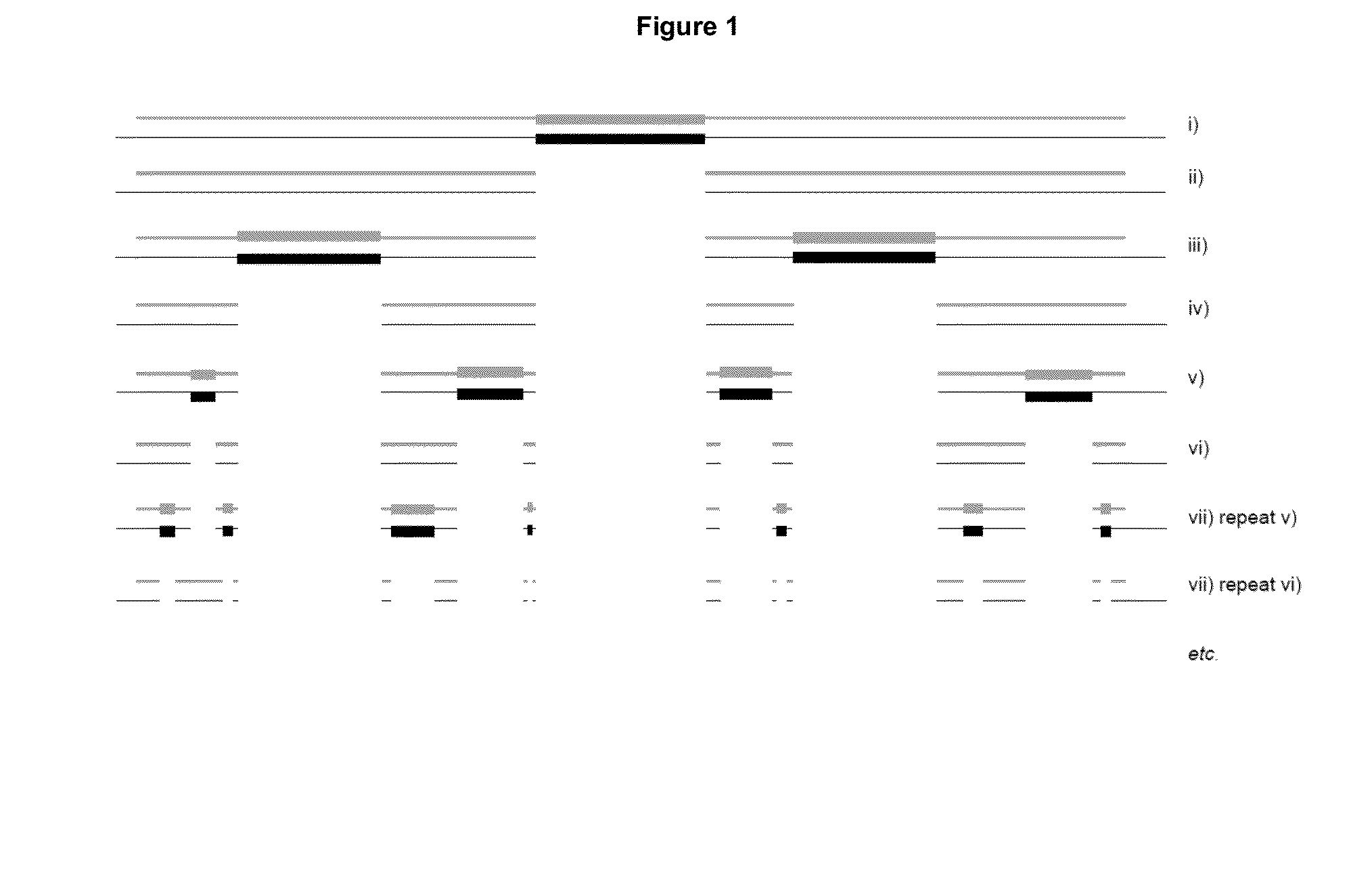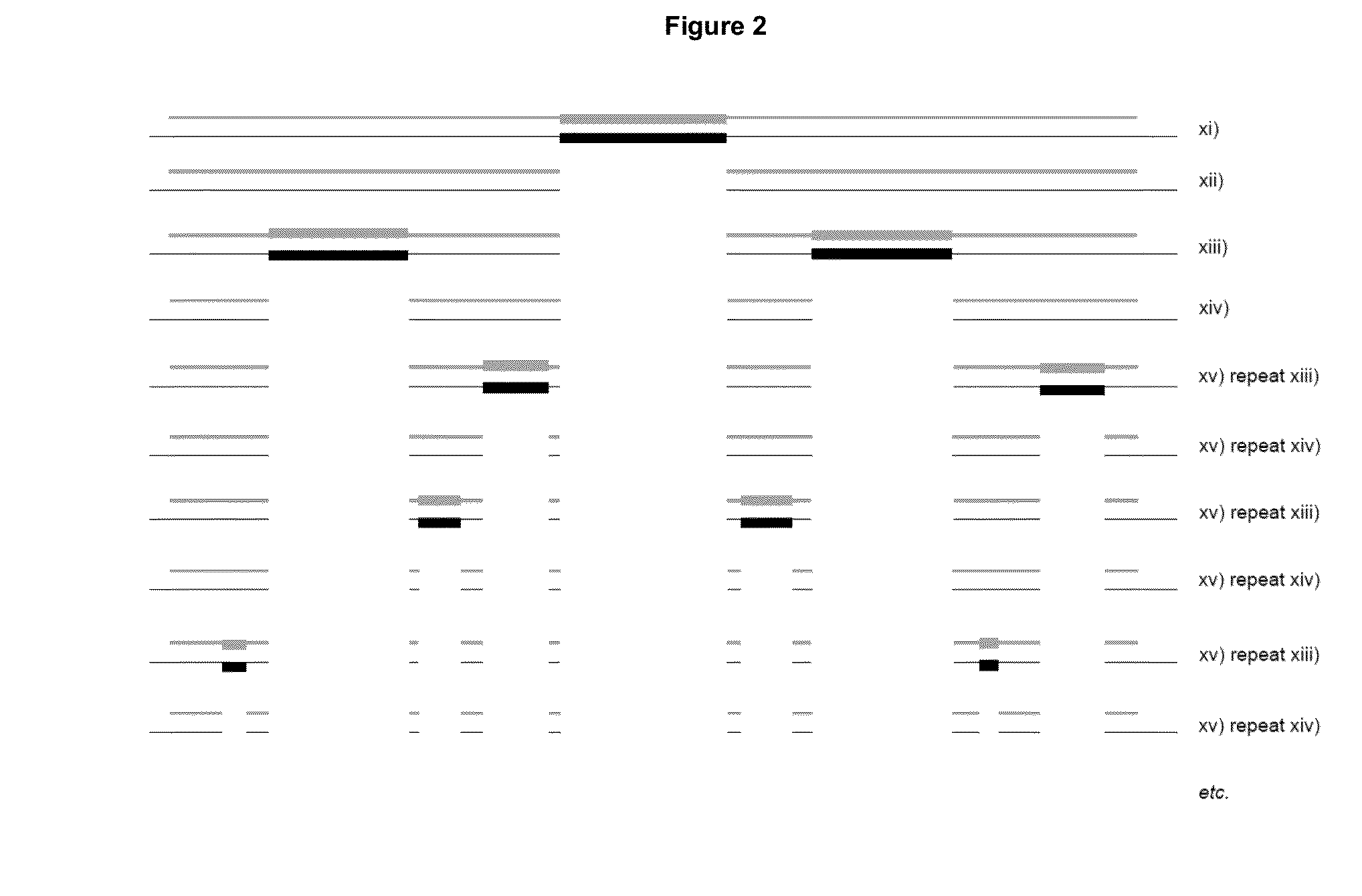Method for quantifying the level of minimal residual disease in a subject
a minimal residual disease and method technology, applied in the field of medicine, can solve the problems of not being useful, not specifically revealing a method which achieves improvement through the alignment strategy, and not being able to solve the problem of complete recovery of subjects after treatmen
- Summary
- Abstract
- Description
- Claims
- Application Information
AI Technical Summary
Benefits of technology
Problems solved by technology
Method used
Image
Examples
example 1
Quantification of MRD in Multiple Myeloma Using Massively Parallel Sequencing of Genes of Immunoglobulins
[0503]The following presents a method for quantification of tumor clonotypic sequences within the polyclonal background rearrangements of genes of immunoglobulins (Ig) via massively parallel sequencing (MPS). The detection of clonal rearrangement in B and T cell neoplasms allows the evolution of these pathologies to be monitored. To quantify these rearrangements in B cells, primers disclosed in Tables 1 and 2 for CDR3, VDJ, IgH, IgK, KVJ, KDEL, and IgL were used, because these fragments cover more than 90% of cases (Van Dongen, Leukemia 2003). The selection of these particular rearrangements is due to the design of primers which only amplify short (less than 200 bp) sequences; allowing to sequence these fragments in the PROTON platform, capable of 10 Gb.
[0504]Patients negative for VDJ, IgH, CDR3, KVJ, KDEL diagnoses may be sequenced with the rest of the BIOMED primers like IgH, V...
example 2
Quantification of SNV, MNV and Indels
[0510]The method described in the foregoing is applicable to the detection of any type of mutation, given some limitations, as follows. The average error based on massive sequencing platforms is 0.5% or, in other words, one erroneous reading in 200 for each position in the genome. The probability that an error happens reading the variant sought is 0.5% / 4 bases, or about 0.1%. This theoretical limitation has been verified experimentally for point mutations (SNV: DNM3A and IDH2) in cases of AML (acute myeloid leukemia, FIG. 5), wherein this error is 0.1% for each position. In those mutations that include more than two positions for reading, such as a multiple mutation (MNV) or an indel, the error will be (0.1×n) %, where n is the number of clonal variants present in the reading.
example 3
Quantification of Long Insertions and Translocations
[0511]In this case the sensitivity limit is not reached due to the fact that there is no background against which to compare readings, because primers amplify only those DNA fragments that have a translocation or inversion. To alleviate this problem, a control DNA was used, this being one of the genes involved in the translocation, in its wild-type form. Thus the ratio of clonotypic sequences / total sequences takes into account the number of readings of both.
PUM
| Property | Measurement | Unit |
|---|---|---|
| weight | aaaaa | aaaaa |
| length | aaaaa | aaaaa |
| Ct | aaaaa | aaaaa |
Abstract
Description
Claims
Application Information
 Login to View More
Login to View More - R&D
- Intellectual Property
- Life Sciences
- Materials
- Tech Scout
- Unparalleled Data Quality
- Higher Quality Content
- 60% Fewer Hallucinations
Browse by: Latest US Patents, China's latest patents, Technical Efficacy Thesaurus, Application Domain, Technology Topic, Popular Technical Reports.
© 2025 PatSnap. All rights reserved.Legal|Privacy policy|Modern Slavery Act Transparency Statement|Sitemap|About US| Contact US: help@patsnap.com



